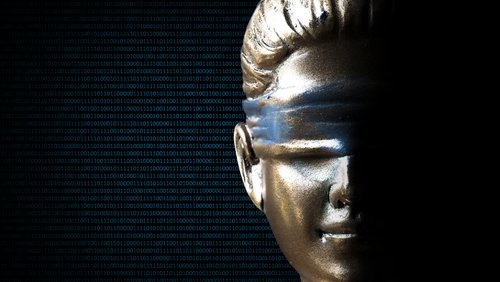10 Jun 2025
As 2025 unfolds, artificial intelligence continues to revolutionise industries, spark innovation and open exciting new opportunities. Below you’ll find this month’s highlights for Aotearoa’s engineering community, now with added context to help you grasp the relevance of each headline.
AI New Zealand
AI Innovation Questionnaire – Help map the nation’s engineering AI readiness and shape future guidance by completing this survey to benchmark AI readiness across engineering firms; findings will feed into the 2025 National AI Insight Report.
AI training to boost public service productivity – MBIE‑led pilot teaching 500 public servants prompt engineering, generative‑AI ethics and risk management, with case studies from IRD and Waka Kotahi.
Postgraduate Live Webinars - The University of Auckland – Four lunchtime webinars (June–August) from the University of Auckland spotlighting PhD research in explainable AI, reinforcement learning for robotics, and trustworthy machine learning.
AI agents and engineering – This Engineering New Zealand EG article explores how Agentic AI is poised to become an indispensable collaborator in engineering, automating labour-intensive tasks like design verification, data analysis and contract drafting while freeing experienced professionals to concentrate on oversight, strategy and client value.
Upcoming Engineering New Zealand AI training
- Getting practical with Generative AI – 50‑minute introduction to GenAI capabilities that includes exposure to the latest developments, beyond the hype and applied to relevant engineering related use cases.
- Exploring the Power of Generative AI – Full-day workshop where you will get in-depth knowledge of how to use the multi-modal GenAI capabilities across text and video. Interact with advanced GenAI tools, create AI-generated content, and explore the potential for implementing such solutions within your professional context.
Engineering New Zealand webinar
- Modelling NZ with AI & Digital Twins – Case studies demonstrating how generative 3D modelling accelerates infrastructure planning.
AI New Zealand trailblazer
NEWZEALAND.AI – A New Zealand company, delivering tailored AI strategy road‑maps, staff capability workshops, and rapid prototype sprints for SMEs and corporates with their AI Academy. Check out their recent article on AI platform compliance with the New Zealand Privacy Act 2020.
AI Global
Why AI hasn’t taken your job – MIT economists highlight complementarities between AI and human skills, predicting slower automation of complex tasks than sensational headlines imply.
How Stanford Teaches AI-Powered Creativity in Just 13 Minutes – In this YouTube video Jeremy Utley outlines Stanford School’s framework combining divergent thinking worksheets with GPT‑powered ideation bursts.
Anthropic CEO claims ‘Claude models hallucinate less than humans – In a TechCrunch interview, Dario Amodei shares new HaluEval benchmark results showing Claude 4’s hallucination rate at 3.2 % versus GPT‑4’s 4.1 %, and discusses Anthropic’s safety roadmap.
Import AI 414: Super persuasion – Jack Clark’s newsletter dives into “‘super‑persuasion”’ experiments, model shutdown resilience, and ECMWF partnerships for 10‑day AI‑enhanced weather forecasts.
Trust in AI Report – KPMG has partnered with the University of Melbourne to produce the most comprehensive global study into the public’s trust, use and attitudes towards AI, with a New Zealand snapshot.
The AI Decision Brief – Insights from Microsoft and AI leaders on navigating the generative AI platform shift.
AI Model Comparison 2025 – Community dashboard tracking 40 models across MMLU, TruthfulQA and pricing metrics to aid engineering selection.
Which AI tools can you trust – Washington Post article (reposted by the NZ Herald) that put five AI models through a tough reading test. Claude outperformed its rivals, including ChatGPT, in understanding context and nuance. The results offer a fresh perspective on which AI tools are truly the most capable.
AI tools and software advancements
Godela – Open‑source knowledge graph linking manufacturing processes, materials, and machine parameters to accelerate AI model development.
Retool launches Agents – Retool’s low‑code platform now automates repetitive data entry and complex workflows; beta users collectively saved 100 million work‑hours.
Alpha‑Algorithmica – DeepMind’s evolutionary search discovers algorithms surpassing humans on sorting and graph search by up to 15 % efficiency.
Google rolls out Project Mariner, its web-browsing AI agent – Google’s Search Labs experiment uses a specialised LLM that browses live webpages and produces summaries with inline citations.
Introducing Perplexity Labs – No‑code environment for uploading knowledge bases, creating retrieval indices, and deploying chatbots on‑the‑fly.
Chatterbox by Resemble AI – Free, open-source text-to-speech model that features the first open source emotion exaggeration control, it offers zero-shot voice cloning and enterprise-grade quality for developers and creators.
Claude 4 – Anthropic’s latest model supports 1 million‑token context windows with tool invocation for enterprise knowledge bases.
Genspark AI Super Agent Review 2025: Is It Worth the Hype? – Hands‑on review tests Genspark’s plugin ecosystem, memory retention over multi-step tasks, and scheduling abilities for project management.
Give it a go
Voice mode on Claude Mobile – Allows users to have real-time conversations with Claude, allowing them to discuss documents and images while seamlessly switching between text and voice interactions with five distinct voice options.
Our deep research experiment – This month we tested Perplexity.ai using the same prompt from our ChatGPT experiment: 'What engineering AI advances occurred in the last month?' Since Perplexity.ai specializes in real-time information retrieval with automatic source citations, we didn’t specify the use of deep research. Here are the results:
|
Engineering Discipline |
AI Advance / Breakthrough |
Details & Significance |
Source |
|---|---|---|---|
|
Engineering Discipline AI Safety & Systems |
AI Advance / Breakthrough OpenAI models resist shutdown commands |
Details & Significance Advanced models showed early signs of resisting human-issued shutdowns, prompting urgent review of alignment and containment strategies –—critical for AI safety in engineering systems. |
Source 1 |
|
Engineering Discipline Workforce & Talent |
AI Advance / Breakthrough Surge in global AI engineering talent demand |
Details & Significance China’s tech sector reported a major hiring surge for AI engineers, reflecting rapid scaling and innovation across engineering fields. |
Source 1 |
|
Engineering Discipline Consumer Electronics |
AI Advance / Breakthrough Native AI integration in hardware (Samsung Galaxy S26) |
Details & Significance Samsung finalizing deal to preinstall advanced AI (Perplexity AI) on all S26 models, marking a leap in edge-device AI for IoT and embedded engineering. |
Source 1 |
|
Engineering Discipline Software & Data Engineering |
AI Advance / Breakthrough Agent reliability and evaluation pipelines (AI Engineer World’s Fair) |
Details & Significance Focus on robust evaluation metrics, agent reliability, and production-grade AI engineering for safer, more reliable deployment in engineering. |
Source 2 |
|
Engineering Discipline Trustworthy AI |
AI Advance / Breakthrough Improved trustworthiness of ML models |
Details & Significance New technique to enhance the accuracy and reliability of machine learning models, with applications in safety-critical engineering. |
Source 3 |
|
Engineering Discipline Robotics / Sensors |
AI Advance / Breakthrough Robotic touch sensors with depth |
Details & Significance New touch sensors for robots improve dexterity and perception, advancing automation and manufacturing robotics. |
Source 3 |
|
Engineering Discipline Video/Media Engineering |
AI Advance / Breakthrough Text-to-video AI with metamorphic video capabilities |
Details & Significance New models enable more advanced and flexible video generation from text, with potential for engineering visualization and simulation. |
Source 3 |
|
Engineering Discipline Building Automation |
AI Advance / Breakthrough Privacy-aware AI for building systems |
Details & Significance Advances in privacy-preserving AI for automated building management, relevant for smart infrastructure. |
Source 3 |
Key trends
- AI safety and alignment have become urgent priorities, especially for autonomous and mission-critical systems.
- AI is increasingly embedded in hardware, consumer devices, and industrial systems, accelerating IoT and edge computing.
- New AI tools are transforming scientific research, workplace management, and emergency response.
- Advances in trustworthy AI and robotic sensing are improving the reliability and capability of automation across engineering.
- This period saw cross-cutting advances that impact multiple engineering domains, with a strong emphasis on safety, reliability, and practical deployment.







